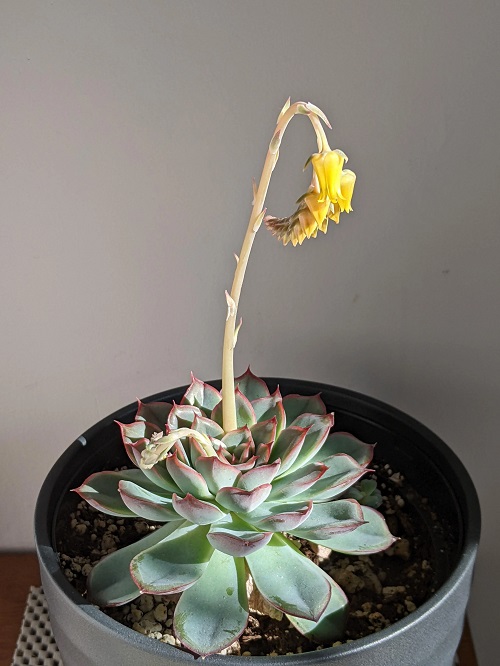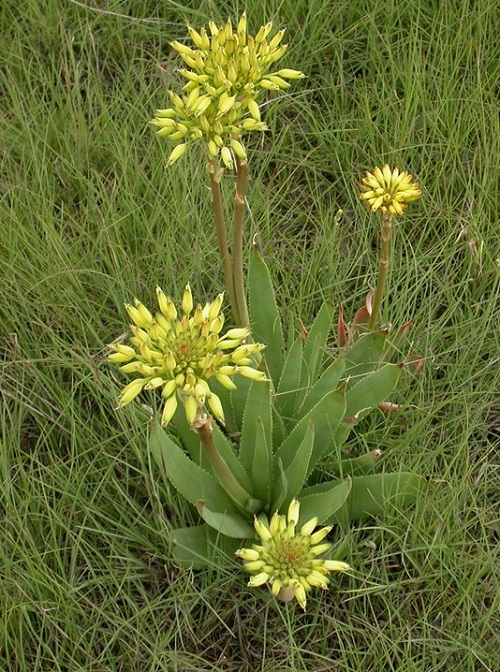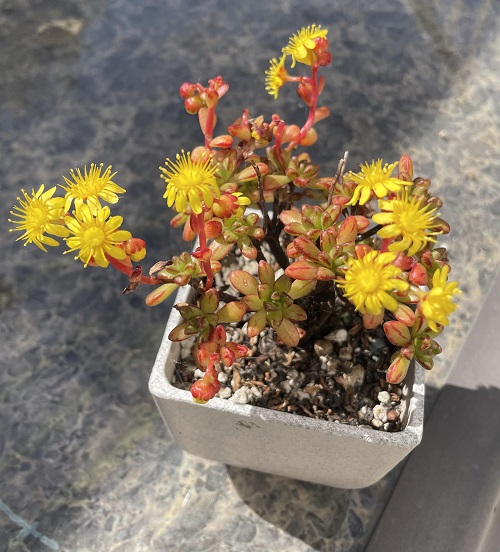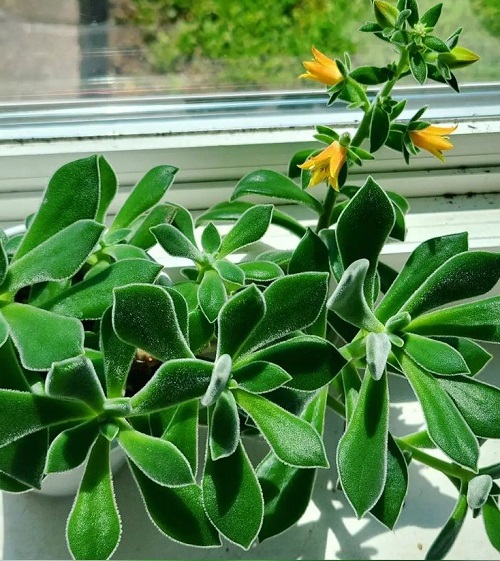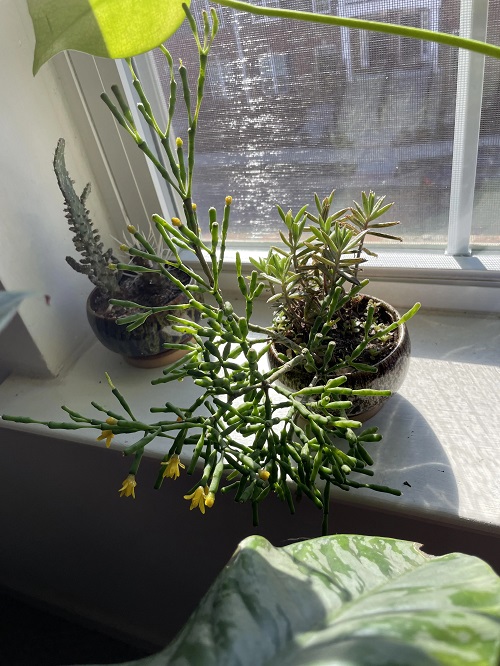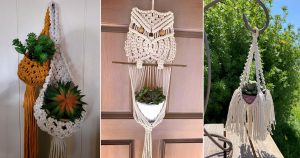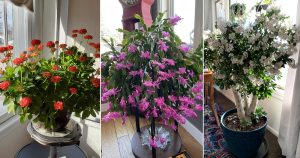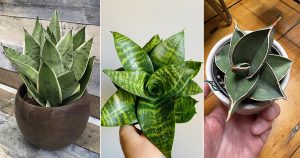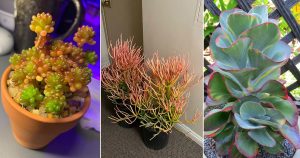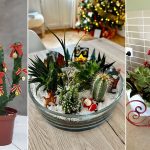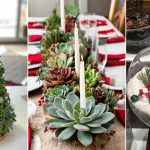Add a splash of sunshine to your home and garden with these Succulents With Yellow Flowers!
Chase away the blues with these cheerful golden blooms! Known for their striking appearance and minimal care requirements, these Succulents With Yellow Flowers are perfect for enthusiasts seeking both beauty and simplicity. Keep reading!
Succulents With Yellow Flowers
1. Christ Plant
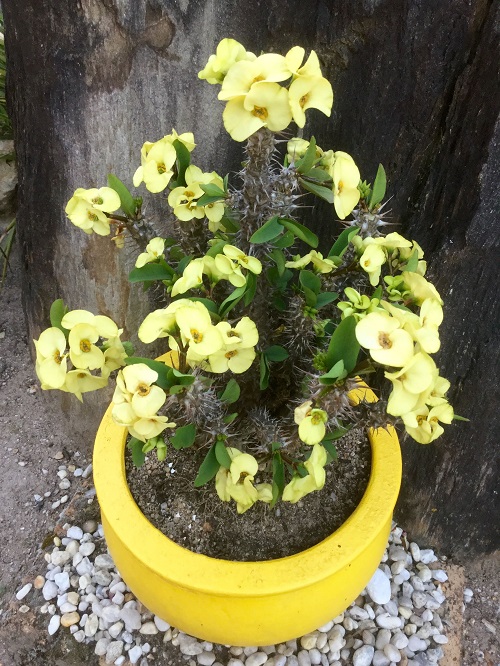
Botanical Name: Euphorbia milii ‘Primrose Yellow’
Also known as the Crown of Thorns, this shrub-like succulent has grayish-brown branches covered in spines and sprouts of obovate leaves. While mostly red, pink, and white, certain species display dreamy yellow flowers covered under pairs of petal-like bracts.
This tough plant is apt for seaside locations where it will get salty soil. A sunny windowsill in your home works great as well!
2. Yellow Tower
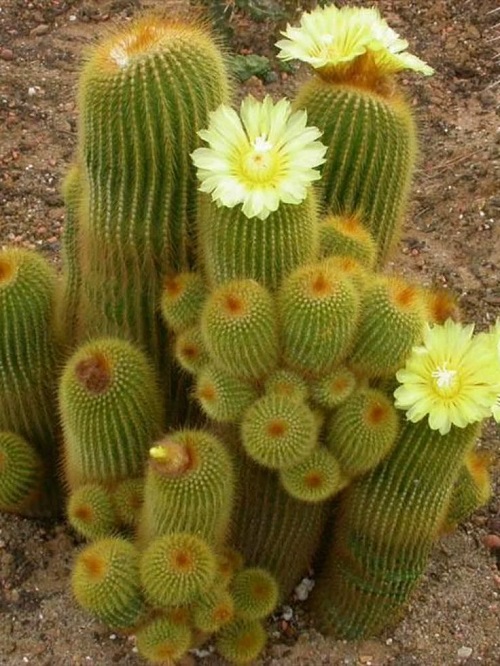
Botanical Name: Parodia leninghausii
Yellow Tower is a cactus from southern Brazil, mainly from rocky inclines. When young, this succulent displays clusters of globular stems that later turn columnar-shaped with maturity. In summer, after it has matured, the yellow tower is capped with lacy buttery yellow blooms.
Unlike other succulents, Yellow Tower needs even irrigation and is not a fan of direct sunlight. However, it cannot survive in prolonged dampness or sitting water.
3. Golden Barrel Cactus
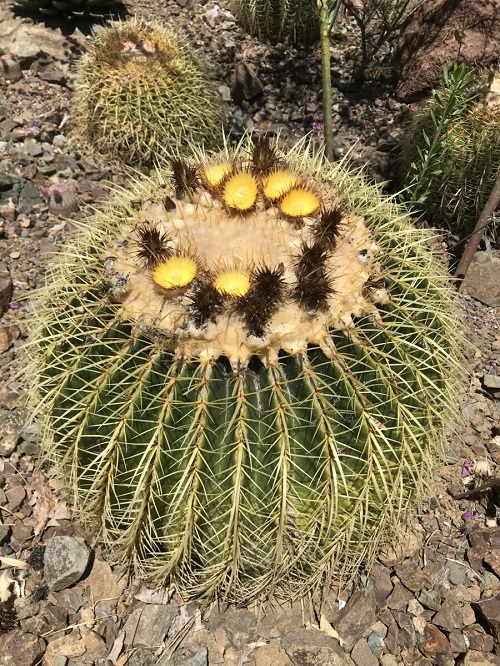
Botanical Name: Echinocactus grusonii
Golden Barrel Cactus is a fast-growing indoor succulent earns its name from being perfectly round when young, with evenly spaced rows of spines on its ribbed lobes.
This remarkable succulent takes up to 15 years to mature fully. Once it reaches a height of around 6 feet, it produces rare yellow blooms atop its barrel-shaped body, which last for about 2-6 weeks.
4. Jelly Bean Plant
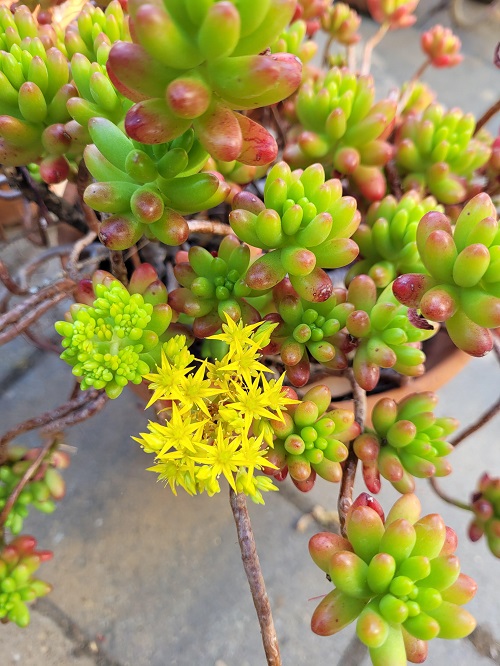
Botanical Name: Sedum rubrotinctum
Jelly beans are colorful plants with red-tipped leaves that resemble jelly beans. They have a special place in people’s homes and have different names, like pork-n-beans and, sometimes, Christmas cheer. Their beauty multiplies when tiny, pointed, star-shaped yellow flowers appear during winter and continue till spring.
Fun Fact: The leaves of the Jelly Bean Plant can change color based on the amount of sunlight they receive.
5. Yellow Kalanchoe
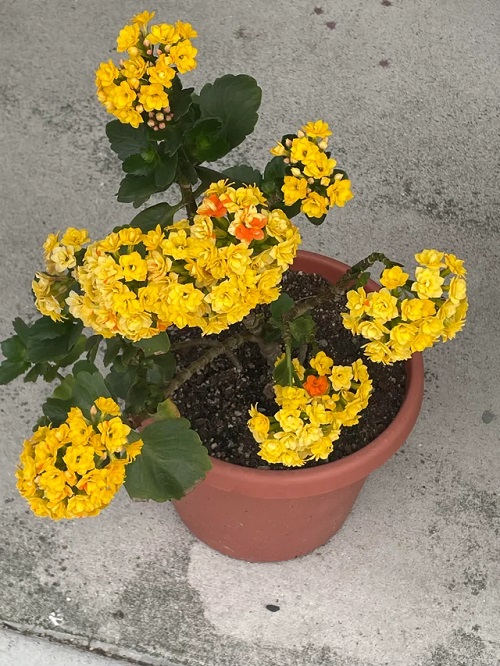
Botanical Name: Kalanchoe grandiflora
Yellow Kalanchoe’s egg-shaped, bluish-green, glossy leaves and clusters of long-lasting, fiery yellow flowers make it a house favorite. Since it also bears fruits, remember to prune after flowering, to keep it full and lush.
6. Pulidonis Echeveria
Botanical Name: Echeveria pulidonis
Pulidonis Echeveria is a flowering plant native to Mexico and Central America. It is a rosette-shaped, 8-inch tall plant that develops pastel yellow, bell-shaped blooms in spring.
Although a winter-hardy plant, this slow-growing succulent is not frost-tolerant.
7. Peanut Cactus
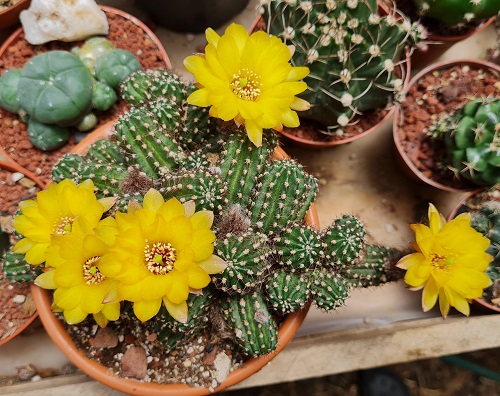
Botanical Name: Echinopsis ‘Yellow Bird’
This tiny cactus with upright cylindrical stems produces tubular flowers in summer in a range of bright colors: red, yellow, pink, and purple. Lasting about a month, the flowers may regrow for a few weeks with proper care.
8. Yellow Mesembryanthemum
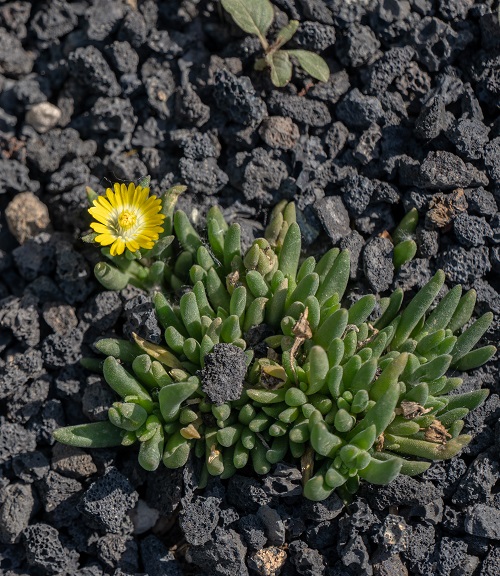
Botanical Name: Mesembryanthemum ‘Yellow’
Yellow Mesembryanthemum trails well and forms a carpet covering the areas where it’s planted. Ideal for dry, sunny banks or rockeries, this sun-loving succulent sports daisy-like large, tropical blooms in yellow, pink, and red in noontime and closes during less light.
9. Aloe Vera
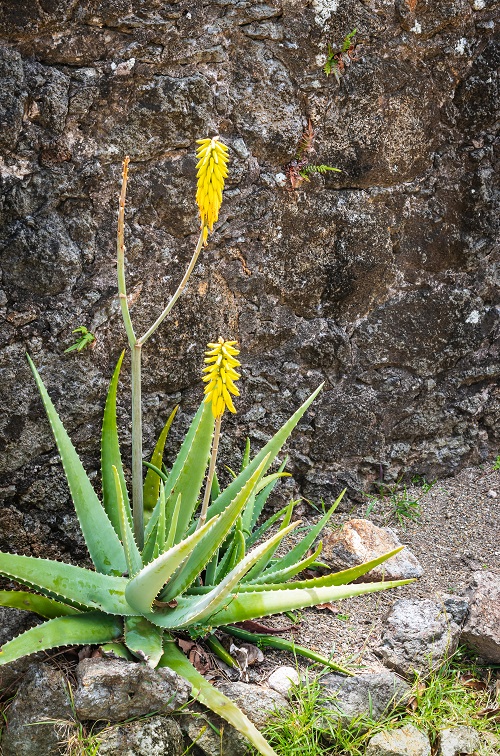
Botanical Name: Aloe barbadensis
Aloe Vera is a perennial plant that is stemless and has stiff sword-like succulent leaves growing upwards, forming a rosette. Noted for its healing and cosmetic abilities, mature plants produce racemes of tubular yellow blooms that soar over their beautiful rosettes in summer.
10. Yellow Living Stones
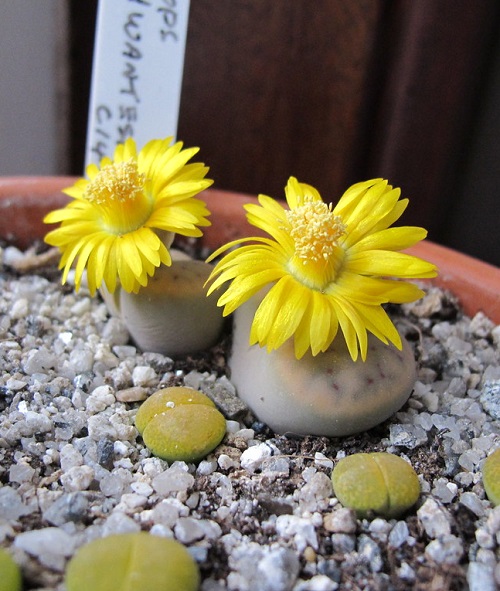
Botanical Name: Lithops fulviceps
Yellow Living Stones is a diminutive succulent that produces a pair of thick, fleshy leaves in various colors, including red and grayish brown. During fall, daisy-like yellow flowers emerge from the fissure between the leaves.
11. Yellow Jatropha
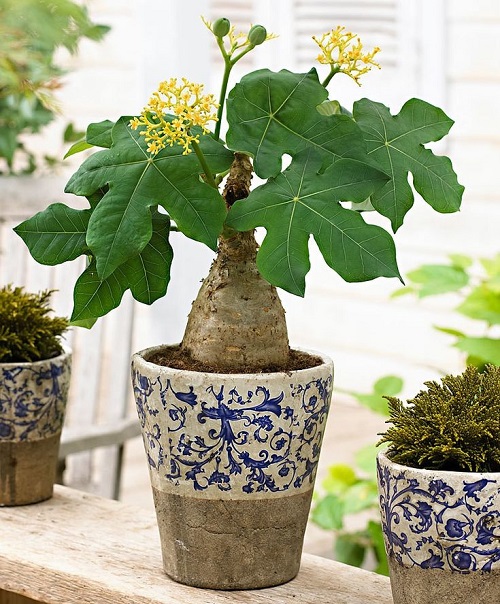
Botanical Name: Jatropha podagrica ‘Yellow Flowers’
It is also known as “Buddha’s Belly,” this stout, self-pollinating perennial herb has a bottle-like structure with a swollen gray-green stem that tapers at the top. Divided into 3-5 lobes, dark green, leathery leaves sprout from the upper portion of the plant, while clusters of yellow and orange flowers are held above and supported on slim stalks.
Interesting Fact: The latex from Jatropha can be used as a natural insect repellent.
12. Dwarf Yellow Grass Aloe
Botanical Name: Aloe linearifolia
With a grass-like appearance, this solitary, stemless plant sports narrow leaves with smooth edges arranged typically in two opposing rows. Flowering in summer, between January and April, the plant produces round clusters of yellow tubular flowers held together on a head-shaped raceme.
13. Yellow Cone Plant
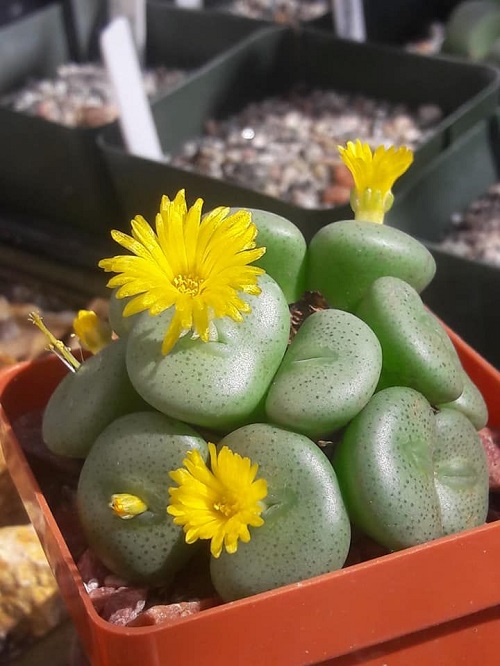
Botanical Name: Conophytum flavum
The Yellow Cone Plant is a flowering succulent with a glassy, faded green, rounded conical body. Much like a pebble and resembling human lips, the faintly spotted bodies are actually a modified pair of succulent leaves fused together, with a cleft at its center. The flowers that sprout from the cleft are relatively large and look like yellow daisies with numerous, soft petals.
14. Dwarf Aeonium
Botanical Name: Aeonium sedifolium
Native to the Canary Islands, this densely branched succulent shrub bears stems with rosettes of glossy lime green leaves with red and brown stripes. In spring, Dwarf Aeoniums produce tall bloom stalks with delicate yellow flowers.
Did You Know? Aeoniums are monocarpic, meaning they die after flowering, but they often produce many offsets before doing so.
15. Yellow-Flowered Ghaap
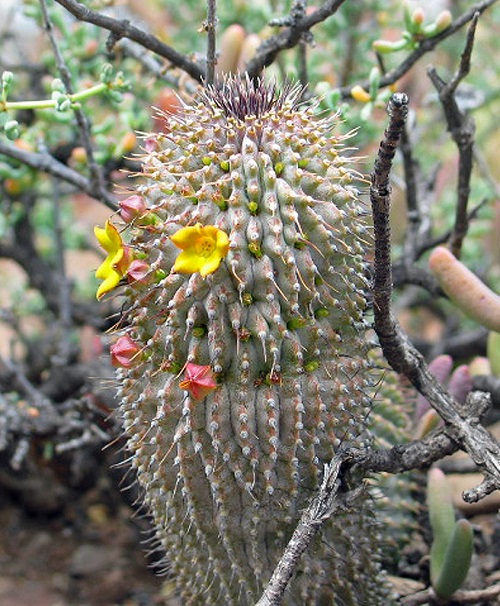
Botanical Name: Hoodia flava
This indigenous shrublet from South Africa is a leafless succulent with cylindrical grey-green stems covered in spines. Also called ghaap in Afrikaans, it grows in bushes or on gravelly slopes and hills. Five-lobed, greenish-yellow translucent flowers appear on the upper part of the stems during winter.
Valued amongst the Khoi San people of southern Africa, it was eaten as raw food during drought to suppress hunger.
16. Golden Queen Sedum
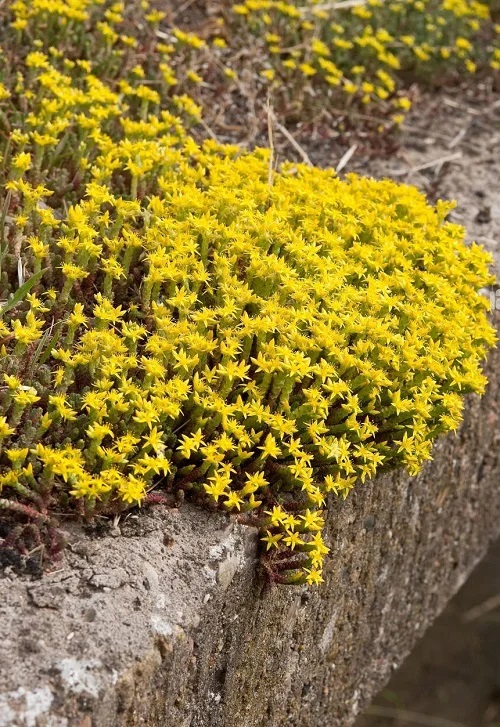
Botanical Name: Sedum acre ‘Golden Queen’
Golden Queen Sedum produces variegated foliage and is a colorful addition to any space. It grows rapidly, up to over 40 cm, and covers the ground quickly with its star-shaped yellow blooms, also great pollinators.
17. Black Rose
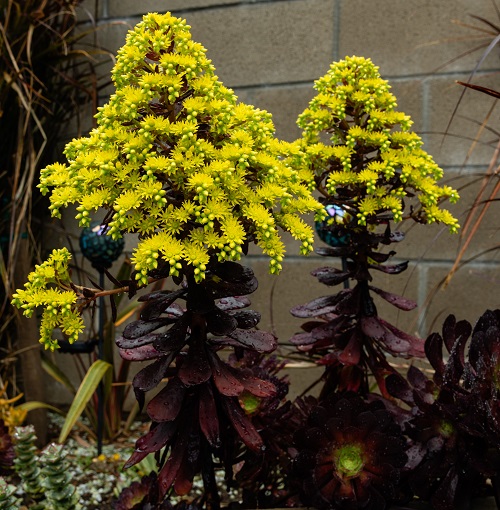
Botanical Name: Aeonium ‘Zwartkop’
With its black and purple succulent leaf rosettes and contrasting fractal clusters of yellow blooms, Black Rose is an absolute architectural showstopper! Perfect for sunny planters and ornamental containers. Additionally, these plants are monocarpic, too!
A Fact—The dark coloration of the leaves is due to high levels of anthocyanins, which protect the plant from intense sunlight.
18. Woolly Rose
Botanical Name: Echeveria ‘Doris Taylor’
Woolly Rose is a winter-dormant, pale green succulent sports rosettes of fleshy leaves covered in glistening hair, giving it quite the fuzzy look! This hybrid, a cross between Echeveria pulvinata ‘Ruby’ and Echeveria setosa, blossoms with deep orange flowers with yellow hues on the insides around spring and summer.
19. Stonecrop
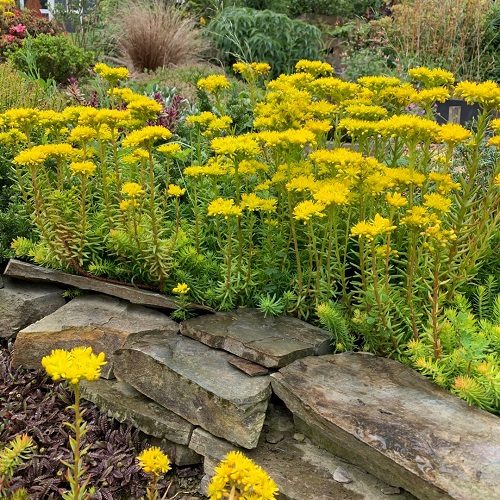
Botanical Name: Sedum rupestre ‘Angelina’
Stonecrop is a mat-forming succulent with golden yellow foliage that turns copper orange in winter. The slow-growing succulent produces nectar-filled clusters of starry, yellow flowers mid-summer, attracting bees, birds and butterflies.
20. Pencil Cactus
Botanical Name: Euphorbia tirucalli
Pencil Cactus is a spineless succulent with a heavy trunk and pencil-like branches comprising several leaves at the top. This unique-looking plant produces inconspicuous yellow blooms inside large petal-like bracts atop its branchlets. But, beware as the milky sap of the Pencil Cactus can cause skin irritation, so handle it with care.
21. Lemon Coral Stonecrop
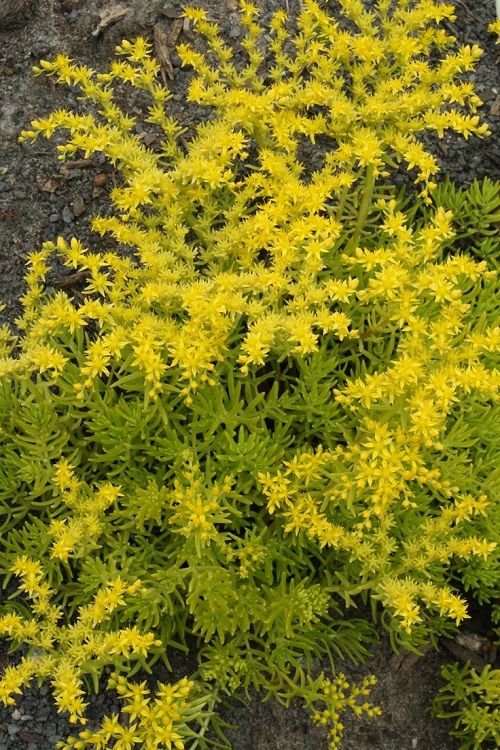
Botanical Name: Sedum mexicanum ‘Lemon Coral’
The lime-green leaves of this low-growing succulent are surprisingly soft despite their spikey and sharp appearance. Forming carpets of neon green, star-shaped golden yellow flowers sprout June through August, providing sunny cover to your ground, borders, and rocky gardens.
A heat and drought-tolerant species, fallen leaves from its spread can be used to propagate new offspring. In addition, this plant is deer-resistant too!
If you also fall in love with these succulents with yellow flowers and already decided to grow some, let us know in the comments which one you choose from this list!

